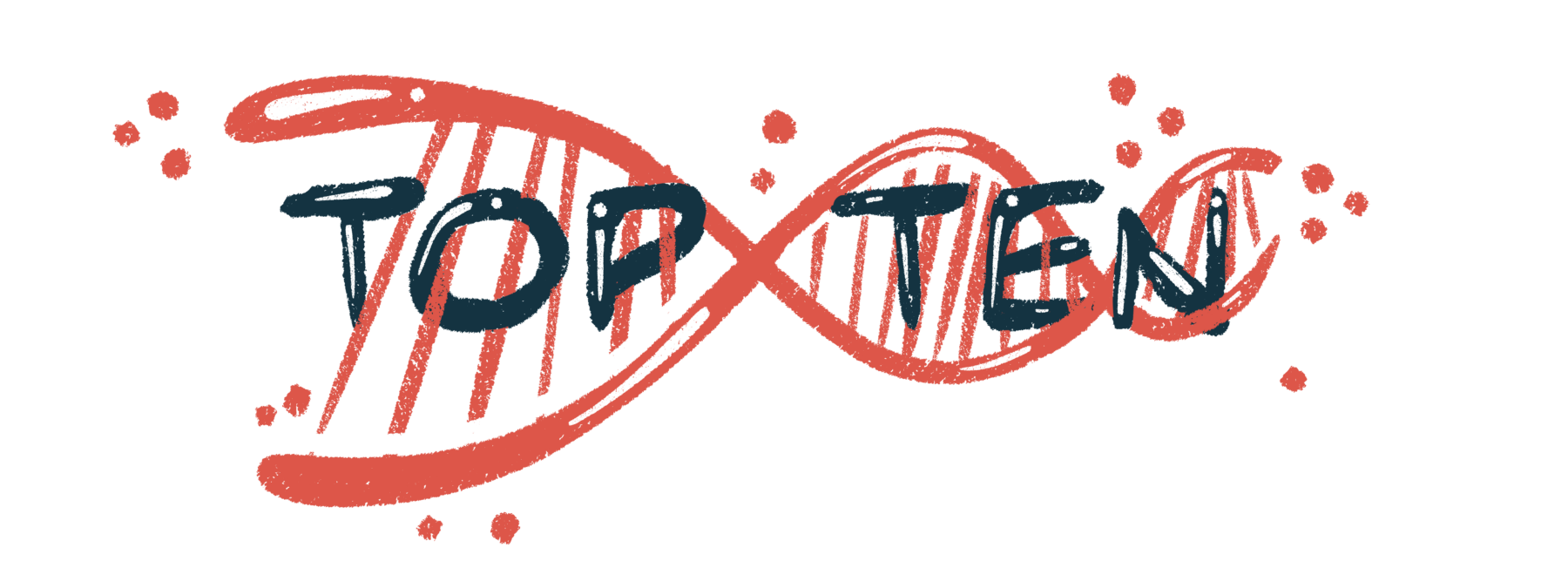Top 10 MD news stories of 2024
Readers sought news about gene therapy, PPMD conference, clinical trials

During 2024, Muscular Dystrohy News Today covered the latest scientific studies, advances in treatment, and clinical trials for the multiple types of muscular dystrophy (MD).
Here is a list of the top 10 most-read stories we published last year.
No. 10 – Patient death prompted pause in DMD gene therapy trial dosing
A Phase 3 trial of fordadistrogene movaparvovec, a gene therapy for Duchenne muscular dystrophy (DMD), paused dosing after the sudden death of a boy who had previously received the treatment. The boy was participating in the Phase 2 DAYLIGHT trial and had received the one-time therapy in early 2023. Pfizer, the company developing the treatment, announced it was working with regulators and an external committee to understand whether the death was related to the gene therapy. Development of fordadistrogene movaparvovec has since been discontinued.
No. 9 – SAT-3247 enhanced muscle function in mouse model of FSHD
SAT-3247, Satellos Bioscience’s experimental oral therapy, was shown to improve skeletal muscle function in a mouse model of facioscapulohumeral muscular dystrophy (FSHD). The therapy, expected to normalize the activity of muscle stem cells and enable muscle regeneration, was discovered using the MyoReGenX platform. SAT-3247 is Satellos’ lead treatment candidate for DMD, with the company conducting a Phase 1 clinical trial in this patient population.
No. 8 – PPMD conference highlighted DMD gene therapy and treatments
As part of our coverage of the 2024 Parent Project Muscular Dystrophy (PPMD) Annual Conference, we reported on a session discussing up-and-coming treatments, including gene therapies and approaches to regenerate muscle cells. As the DMD gene that is mutated in people with Duchenne is too big to fit inside the viral vectors commonly used in gene therapy, topics discussed included strategies to deliver genetic material that still enables production of a working version of the dystrophin protein. One such example is the approved gene therapy Elevidys (delandistrogene moxeparvovec), which delivers a smaller, functional version of dystrophin, whereas Kinea Bio’s midi-dystrophin approach aims to deliver a larger version of dystrophin. Other areas of debate included how to get around the preexisting antibodies that can block a gene therapy from working, and therapies meant to regenerate muscle tissue, such as SAT-3247, or to deliver healthy muscle stem cells, such as MyoPAXon, developed by Myogenica.
No. 7 – 4 therapies meant to slow DMD progression now in clinical trials
Four experimental treatments to slow DMD progression, currently in trials, were also highlighted at the PPMD 2024 conference. They include deramiocel (CAP-1002), Capricor Therapeutics’ cell therapy that is currently in a rolling submission process seeking U.S. approval; sevasemten (EDG-5506), developed by Edgewise Therapeutics to reduce the accumulation of muscle damage, that is in clinical testing for Becker muscular dystrophy and for DMD; Roche’s antibody-based therapy satralizumab (Enspryng for neuromyelitis optica spectrum disorder), currently in Phase 2 testing in DMD patients; and tadalafil, a medication for erectile dysfunction and a form of pulmonary hypertension, that is being tested in an exploratory trial in combination with regular exercise for DMD.
No. 6 – Gene therapy more effective in youngest DMD patients in trial
Fordadistrogene movaparvovec was more effective at preserving function and increasing muscle volume, especially in the youngest patients taking part in a Phase 1b trial, which enrolled boys able to walk. Results presented at the 2024 Muscular Dystrophy Association Clinical & Scientific Conference showed that boys, ages 6 and 7, experienced a clinically meaningful preservation of motor function compared to natural history data, whereas in those ages 8 to 12, scores were not essentially different from those of the control group. Younger boys also showed a higher and more sustained increase in thigh and upper limb muscle volume.
No. 5 – DMD therapies to increase dystrophin production in trials
Updates in clinical trials testing new exon-skipping therapies, which generally seek to increase the production of dystrophin by changing how the DMD gene is read, were also discussed in this year’s PPMD conference. While some exon-skipping therapies are approved in the U.S. for people with specific mutations, several strategies are being explored to improve their delivery to muscles. Existing approaches use an antibody (such as in Avidity Biosciences’ AOC 1044 and in Dyne Therapeutics’ DYNE-251) or a peptide (a small chain of amino acids), as in Entrada Therapeutics’ ENTR-601-44. An alternative consists of chemically modifying the exon-skipping molecule itself, with examples including Biomarin Pharmaceutical’s BMN 351 and Wave Life Sciences’ WVE-N531.
No. 4 – DMD gene therapy SGT-003 granted FDA orphan drug status
A next-generation gene therapy candidate for DMD, dubbed SGT-003, was granted an orphan drug designation by the U.S. Food and Drug Administration. The designation confers benefits such as seven years of market exclusivity if the treatment is ultimately approved. SGT-003 works by delivering a shorter yet functional version of dystrophin, known as microdystrophin. A Phase 1/2 trial called INSPIRE DUCHENNE is currently testing the gene therapy in boys with Duchenne, ages 4-11.
No. 3 – Clinical trial to test gene therapy for limb-girdle muscular dystrophy
A clinical trial of ATA-200, an investigational gene therapy for children with a type of limb-girdle muscular dystrophy called LGMD2C or LGMDR5, was approved to start in France and Italy. The Phase 1/2 trial is expected to enroll six children with the disease, ages 6 to 11, able to walk and rise from a chair, who will receive a single drug infusion. ATA-200, being developed by Atamyo Therapetics, seeks to deliver a functional copy of the SGCG gene to cells, so that the function of the sarcoglycan complex is restored and dystrophin is stabilized.
No.2 – Antioxidant supplement may improve muscle strength in FSHD
A small clinical trial showed antioxidant supplementation in adults with FSHD improved muscle volume and strength, particularly those of the thigh, and quality of life in patients. Antioxidants are able to neutralize oxidant molecules that can cause oxidative stress, a type of cell damage that may play a role in disease. The supplement included vitamin C, vitamin E, zinc gluconate, and selenomethionine (a natural form of selenium present in food). However, walking ability was not improved relative to a placebo.
No. 1 – Elevidys improved motor function in DMD patient
Hiram Secrist, a 7-year-old who was the first patient dosed with the gene therapy Elevidys outside of a clinical trial, has seen sustained improvements in motor function, including better endurance to keep up with his peers since receiving the therapy at age 5. His mother, Kristen Secrist, told Muscular Dystrophy News Today that since receiving the therapy, her son was able to jump or climb stairs on alternating feet, and experienced no side effects. The therapy was shown to enter target cells quickly, so benefits may be seen early, according to Sarah Wright, a neurologist who administered Elevidys to Hiram. Wright expressed her optimism that the therapy may slow disease progression in all DMD patients.
***
We look forward to continuing to serve the MD community this year, and wish all our readers a bright and happy 2025!






